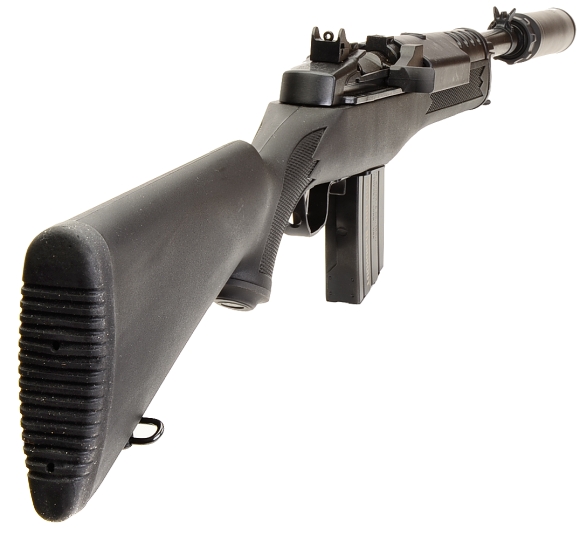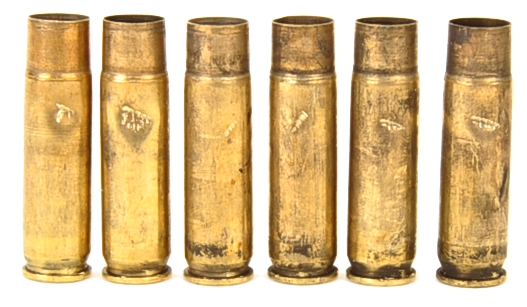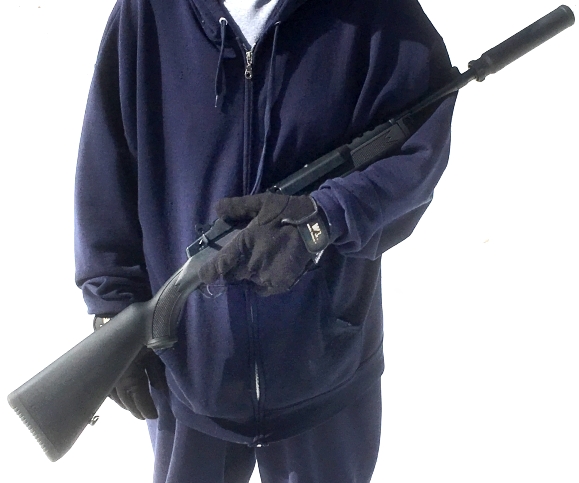I hate exercise for the sake of exercise. No, I am not lazy and I have no qualms about expending the same level of energy in more productive or entertaining ways. It is just that exercising, for the sake of exercising, is incredibly boring and offers no short term gratification. I don’t like to feel the burn and I don’t particularly want my endorphins and serotonin set free.
As a long game, it is difficult not to like exercise; weight loss, reduced blood pressure and reduced effects of stress, a healthy energetic outlook, etc. etc. However, those benefits are difficult to appreciate when you are futilely flapping your arms like a giant flightless bird or power biking to a window view that grows no closer or letting a treadmill run you ragged with a programmed workout. My short legs were never meant to “walk” 5 MPH on a 4° incline, even with the assurance of a dead man’s switch clipped to my shirt. But enough about me. How have you been?

In obverse to Part I, the red dot sights, both types tried with the Picatinny rail, were removed. While the reflex sights proved to be excellent when shooting from the bench where the rifle is well supported, the rifle’s comb is way too low to provide support of my noggin, with the red dot in view, from any other shooting position. The same applied to use of a scope in concert with the Picatinny rail, even with low scope mounts. Consequently, it was back to the Ruger’s factory peep sight for chronograph work, until Amazon delivered a simple fix that allowed comfortable use of optical sights by raising the height of the rifle’s comb.

The cheek riser pictured is a generic piece, sold under several brand names on Amazon for $13. It has three strapping points under the stock and one large band at the back that prevents it from creeping forward or rolling off the comb in use. For shooters who do not want to look like the Audie Murphy in “To Hell and Back”, and “I pull grenade safety pins out with my teeth” look, the Velcro on ammo holder can be removed. Personally, I like it and if I want to screw with people at a public range, I just fill the loops with 458 Winchester rounds.

The cheek riser raises… say that five times fast… the comb height 1 3/8″ and provides firm, but comfortable support for the shooter’s face… or at least my face. This cheek riser is made in China, however, cheek risers are also sold under a number of American brand names, at 3x the cost… which are also made in China. Some are nylon, some are leather, some are plain, some offer adjustable riser heights, and some have all sorts of stuff going on as pictured. With the cheek riser in place, line of sight passed straight through the center of the red dot lens with my cheek fully supported on the riser. The configuration made it difficult to not be on target.
“I think, therefore I like ham” – Descartes Circa 1637
The whole reason for this project was to find a 300 AAC Blackout component combination that would effectively kill pigs out to 150 yards. Yes, I am aware that there are many combinations of firearms and cartridges that will kill pigs at this distance, but it doesn’t hurt to experiment and try different things and there always is satisfaction to be found in picking a rifle/rifle cartridge where you have made some creative investment. A silencer may or may not be used but, as suppressed fire was not a project objective, no heavy bullet, subsonic loads were constructed. Those type of loads are in the Real Guns® handload section.

Flat based bullet selections minimize net case capacity reduction. A low BC round nose bullet, with a purposeless cannelure, made the list because ballistic degradation due to either of these features are inconsequential over a span of 100 or 150 yards. L-R: 110 grain Barnes TAC-TX FB, 125 grain Hornady SST and 150 grain Remington round nose Core-Lokt. Bullets in this weight range intended for 30-30 WCF applications work well with the 300 Blackout in terms of expansion and penetration as the velocity levels are similar.
The Barnes is an expanding monolith copper alloy bullet, designed specifically for the 300 Blackout and recommended by the manufacturer for use on hogs and deer. The Hornady 125 grain SST, which can also be seen with an olive green poly tip in the role of the Remington AccuTip, is also recommended by its manufacturer for hogs and deer. The 150 grain Remington Core-Lokt is often found in front of a 30-30 WCF cartridge loaded into my 14″ barrel Contender or 20″ barrel Marlin 336 where it has been an effective deer and hog killer.
There are many alternatives, some more notable than others. The Speer Gold Dot 300 AAC Blackout 150 grain, Speer #: 308150BLKGDB, would potentially be a good choice, but I had none on hand during the project and no hunting experience with it as a point of reference. The Hornady 160 grain FTX, designed for the 30-30 WCF is the right construction and it has an OK BC, but it is a long bullet and a boat tail. The 135 grain version might be better, but for the minor weight difference and similarity in internal construction I felt the SST was a better choice.
| Cartridge – 300 AAC Blackout |
|
| Firearm | Ruger Mini-14 Tactical |
| Barrel Length | 16.12″ |
| Min – Max Case Length | 1.368″ +0.000″/-0.020″ |
| Min – Max COL | 1.780″ – 2.260″ |
| Primer | CCI 450 |
| Bullet Diameter | 0.3090″ +0.000″/-0.0030″ |
| Reloading Dies | Lee Precision |
| Bullet Type | Bullet Weight Grains |
Net H2O Grains Capacity |
COL” | Powder Type |
Powder Charge Grains |
Muzzle Velocity fps |
Muzzle Energy ft/lbs |
100 Yard 3 Shot Group ” |
| Barnes TAC-TX FB | 110 | 19.7 | 2.250 | H110 | 20.0 | 2418 | 1428 | 1.1 |
| Barnes TAC-TX FB | 110 | 19.6 | 2.250 | Lil’ Gun | 19.5 | 2403 | 1411 | 1.3 |
| Hornady SST | 125 | 19.4 | 2.100 | H110 | 19.0 | 2292 | 1458 | 1.2 |
| Hornady SST | 125 | 19.4 | 2.100 | Lil’ Gun | 18.5 | 2288 | 1453 | 0.9 |
| Remington Core-Lokt | 150 | 19.6 | 2.000 | H110 | 18.5 | 2119 | 1496 | 1.1 |
| Remington Core-Lokt RN |
150 | 19.6 | 2.000 | Lil’ Gun | 18.0 | 2126 | 1505 | 1.3 |
My criticism of these three loads? I think the Barnes is pretentiously pointed, the Hornady is excessively humble and the Remington Core-Lokt is butt ugly. That said, they all produce a good deal of practical accuracy, they don’t beat the Mini-14 to a pulp and they work well on game.
A cold fusion theory…
Generally, Mini-14 300 Blackout and Mini Thirty 7.62x39mm rifles are cleanly ejected with factory ammunition, but love tap handloads where they contact the slide when ejecting. I have found two solutions; back off the pressure or install an adjustable gas block like the one offered by Accuracy Systems.They can also be found on Brownells at $30 above the retail price on the Accuracy Systems site. There was a time when I just went to the Brownells page and ordered. Now, I don’t recognize the people and I always check manufacturer sites first. Times change, people change, traditions change.
So, I thought I was onto a theory where I could gauge comparative pressure levels by measuring the length, width and depth of ejection dents, calculate volume and convert it into a cubic inch per PSI index. Unfortunately, I could not get a clean measurement. So dropped a dented case into a glass graduate near full with distilled water and wetting solution and recorded the displaced weight. Then I pressed modeling clay into the indentation, cleaned the excess off the case with a piece of curve forming Lexan, then dropped the the case back into the water and recorded the difference between it and the clay filled dent case and recorded that weight. Then I did this over a run of six cases and checked the volume as a ratio of the previously recorded muzzle velocity of that cartridge. No, I am not serious, although I would bet that this shows up as a pressure measurement method in some form of social media.
Conclusion… on most everything
The Mini-14 300 Blackout is, of course, a very nifty little rifle and a great alternative to cookie cutter AR whatevers. Is it the only rifle for hog hunting? Of course not. That would be like saying a Chevy is the only kind of car… although there are some Chevy lovers who, like AR lovers, think that is a true statement. So let’s just say that a Ruger Mini-14 300 Blackout is one type of quality hog rifle. I’m happy with the handloads developed here and I will use them on a hunt… unless I change my mind.




Email Notification